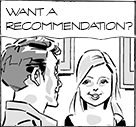Page 45 Review by Stephen
"The clock belongs to old Mrs. Bartholomew upstairs. She's rather particular about it...
"It keeps good time but seldom chooses to strike the right hour."
It's the beginning of the summer holidays. Tom's younger brother Peter has measles so, lest he catch it too, frown-faced Tom is hastily dispatched to Uncle Alan and Auntie Gwen’s Ely where he'll be kept under quarantine. Uncle Alan collects him by car. "I hope we'll get on reasonably well."
A once grand house, it has been divided into flats, at the top of which lives the landlady, old Mrs. Bartholomew. Her grandfather clock stands in the shared hallway, which is dingy even during the day. His Uncle isn't unkind but he's remote and austere, and while his Aunt is jolly you suspect that they've never had children. It doesn't help Tom's sense of being trapped that there are bars on his windows.
Perfectly evoked are the awkwardness and boredom when you're young of staying alone outside your home, without friends or familiar books and toys: of being very much a visitor. Time passes excruciatingly slowly as Tom lies flat on his back on his bed. Then, during a typically sleepless night, Tom hears the grandfather clock's sonorous chime not of ten o'clock, not eleven o'clock, not twelve o'clock but... "I had to know what time the clock fingers would be showing when it struck thirteen..."
Tom descends the staircase gingerly, but the scant moonbeams aren't bright enough to read the clock face, so he opens the door to let more light in, and instead of the cluttered back yard, Tom is confronted by a sprawling green garden of some country mansion, in full summer flower and daylight!
I promise you 'transporting': the contrast is startling. The drabness of Tom's confines had been accentuated with three muted slightly sickly shades shared by the walls, the bed linen and Auntie Gwen's frock. Then there was the perpetually dark and gloomy hallway. Now Edith opens everything up – like an orchestra letting rip after mournful solos - with a full-page blast of fresh, vivid green, sunshine yellows, livid purple and scarlet blooms. In addition, behind the informal garden there is the promise of more to explore with a meadow and tree line in the distance behind the hedge. As Tom begins to beam in his smart, white jim-jams, you can feel the cool, soft grass beneath his tiny feet.
Those Tom spies living there (three brothers and young cousin Harriet) are dressed as late Victorians, and he soon discovers time passing differently in the garden than it does at his Auntie and Uncle's,
Edith also captures not just the scale but variety of such a rambling estate: the walled garden with its green door, an ornamental pond, informal thoroughfares through woodland under canopies of trees, formal walkways under tunnels of foliage, shrubbery, flower beds, fences, gates, and a greenhouse. The dappled light under the apple orchard's trees in painted to perfection, their squat, knotted trunks a sure sign of their maturity. I also adore Tom's wide white eyes, big head and body language which are perfect for an age when we haven't yet achieved full agility. Auntie Gwen is so plump and homely that she could almost have been pencilled – though not coloured – by Raymond Briggs.
Obviously there is an element of time travelling involved, but it's far from linear or predictable. Plus there's something far more complex, personal and intimate at work as you shall see. For, at its heart, this is the story of two lonely souls craving company, reaching out and finding it.

